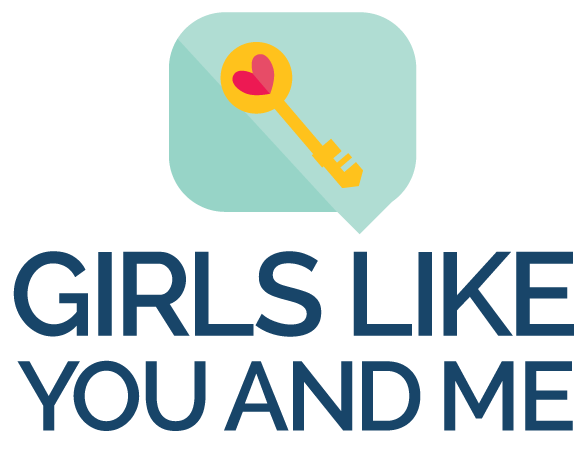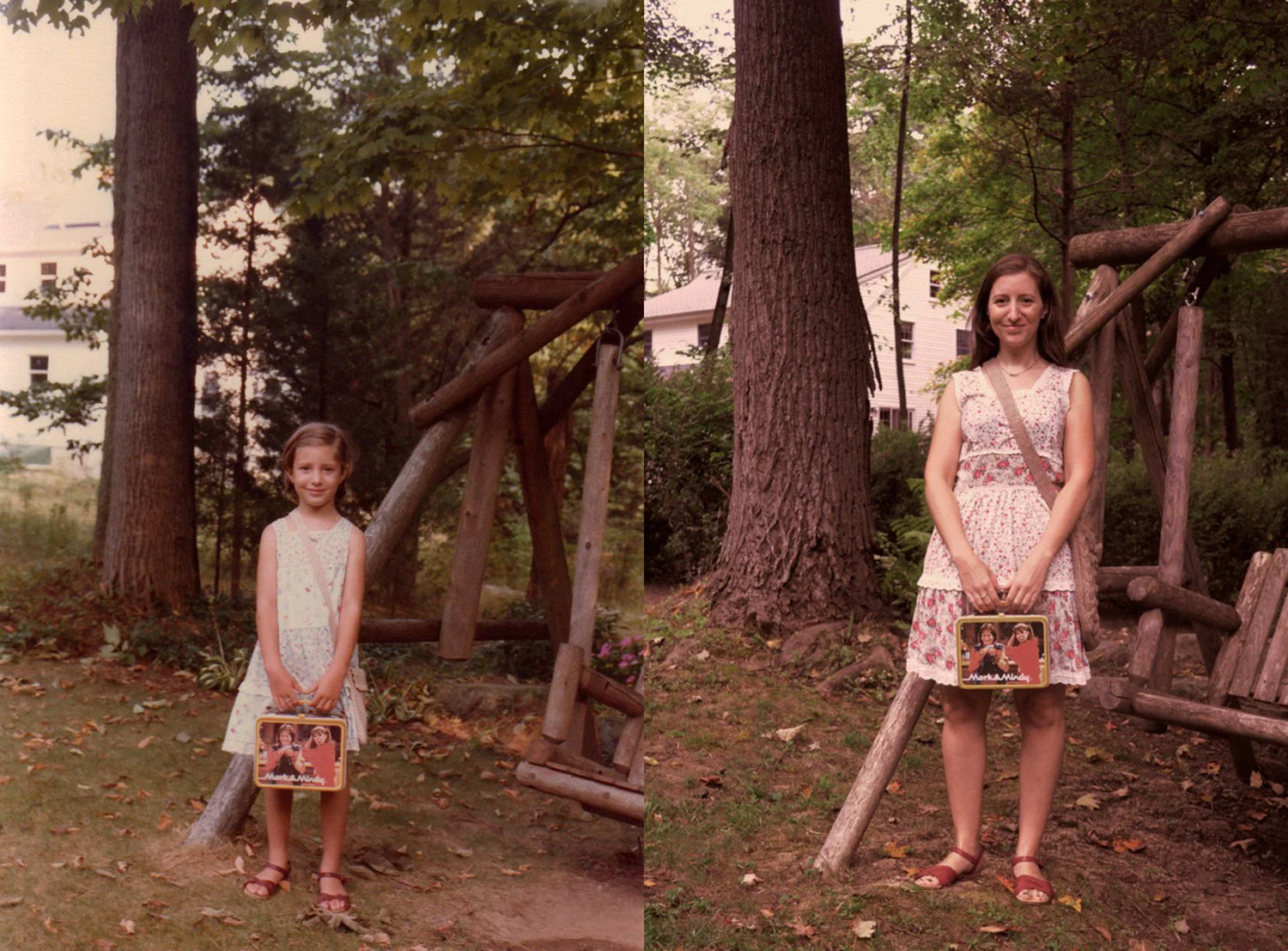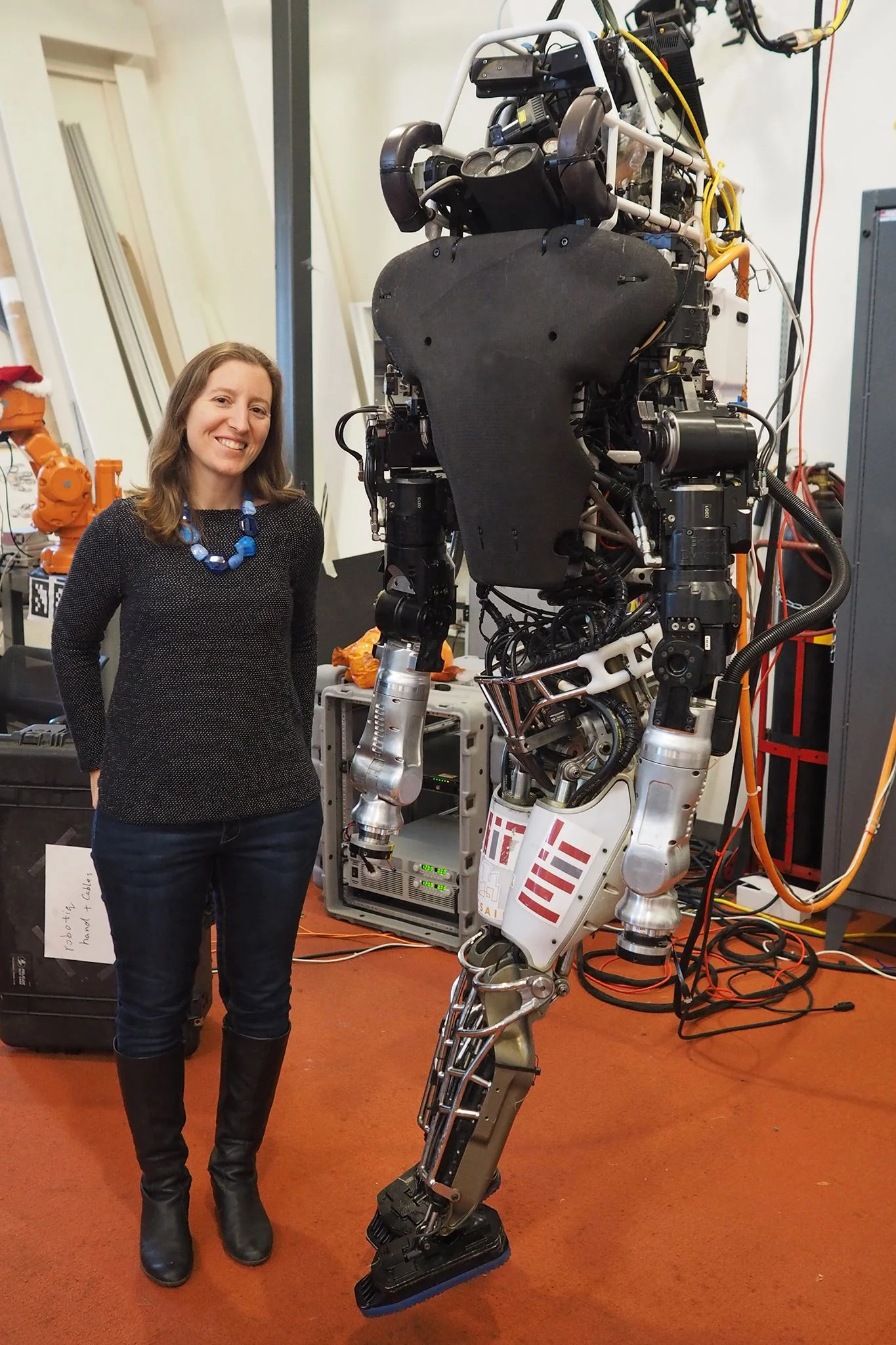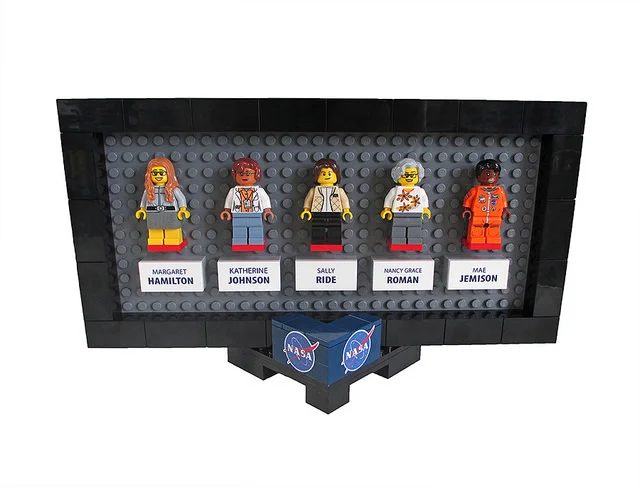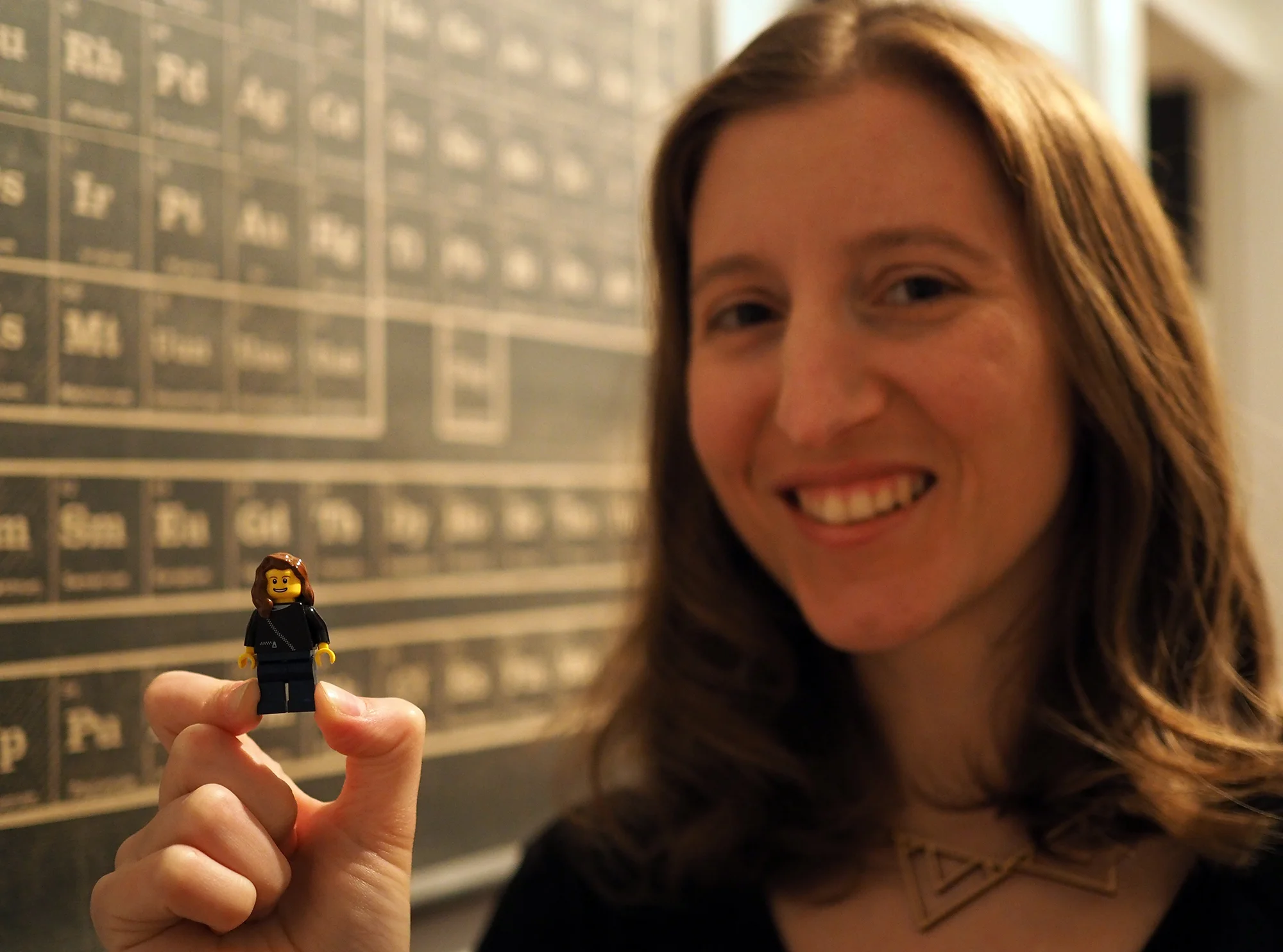Science Communicator Maia Weinstock explores the universe
Maia Weinstock with the Women of NASA LEGO set she created
Recently, Maia Weinstock's Women of NASA LEGO minifigures set has gotten a lot of attention, but it's just one element of Maia's commitment to raising the profile of women in STEM. She's spent her career as a science communicator- writing and researching about science for magazines and on the internet, creating short cartoon films, and now, sharing the exciting work coming out of MIT, as Deputy Editor of MIT News. For Maia, science communication "is a great career if you have many interests, because you don't necessarily have to just pick one."
FAST FACTS ABOUT MAIA
Where she’s from: Westchester County, New York
Grew up with: mother, father, brother
Education: Bachelor’s degree in human biology from Brown University
Where she lives now: Cambridge, Massachusetts
Growing up she wanted to be: doing something that contributed to humanity
Now she’s: Deputy Editor at MIT News
Tell us about yourself growing up!
I was always pretty active in lots of different things. I loved school. I was a studious kid. I was always eating up information and just always reading and trying to learn as much as I could. I was fascinated by learning more about science and how the world worked.
I was really interested in sports. When I was elementary school age, I started doing Little League. I was one of the few girls at the time in my area who was doing Little League, but I loved it. Baseball is one of those sports that's in my blood.
When I was going through middle school and high school, I also got very interested in music. I played the flute, I sang, and I started getting interested in science, too. I got involved in some afterschool groups relating to science. I did just about every activity you could think of. I was always doing something after school and on the weekends. I was a pretty busy kid.
When I got to college, I did singing pretty seriously, as an amateur. I was in chamber choir in high school, and then when I was in college, I did a cappella, and our group was pretty good at the time. We did touring around the country whenever we could, and then we recorded music, and we did the national championship circuit. That was a lot of fun.
Why do things exist the way they do and how do they come to be the way they are? When you're a little kid is when you really start to have these questions, but if these questions take hold in you, then you gravitate towards science. I certainly did.
What got you interested in science?
I remember being interested going back to third grade, which was the first time that we started learning about the planets and matter and biodiversity around the world. I was fascinated to keep learning about worlds and planets not part of our own and consider that there's this whole universe. I was always wanting to know why and how. Why do things exist the way they do and how do they come to be the way they are? I think these are the essential questions that we always come back to. When you're a little kid is when you really start to have these questions, but if these questions take hold in you, then you can gravitate towards science, and I certainly did.
Maia as a girl and an adult with her Mork and Mindy lunchbox
Were there adults in your life who encouraged you to think about those things or who were influential in other ways?
I had a few teacher-mentors growing up, and certainly my parents were very encouraging. I had one science teacher in 7th grade, who I still keep in touch with. She really encouraged me to do science. She could see that I really enjoyed science, and she definitely was an inspiration for me. I had some other teachers growing up, who helped me along.
I remember when I first was studying astronomy as a part of a physics class. One of my teachers, who was a little bit more well-versed in cosmology, which is the evolution of the universe, took me aside and showed me a couple of demonstrations about what it means for the universe to be expanding. I remember just being fascinated and thinking, “I would love to study this.” Other teachers encouraged me to do other things. I remember a math teacher suggested I do a summer program at a New England university that I ended up going to. All these little pushes along the way help you really become who you are. I'm always appreciative of all my teachers and mentors throughout my career.
I ultimately ended up doing science communication, which is a great career if you have many interests, because you don't necessarily have to just pick one.
You majored in human biology in college. Was there anything else you considered?
One of the great things about Brown is it's very self-directed, and that's one of the reasons I really liked Brown. I actually originally was thinking of doing astronomy, and so I did some physics, some astronomy, a bunch of chemistry, some math, and ended up just changing my mind. I actually changed my mind like five different times about what I wanted to major in. Brown was actually a really good place to experiment a little bit about trying to figure out what career path you might take. For a little while, I thought I would finish my degree and then go back to art school and become a graphic designer. I tried to do a summer internship in design, got put in the wrong place, and discovered, because they put me at this kid's magazine, that science writing was this discipline that I'd never really considered.
Immediately, as I got back to school, I discovered planetary science and fell in love with planetary science. I thought about maybe switching to do that, but at the same time, it was my last year in college. I thought, “It's too late for me to switch again.” I ultimately ended up doing science communication, which is a great career if you have many interests, because you don't necessarily have to just pick one. For someone like me, it's very hard to just focus on one area and ignore everything else.
You started off working at a science magazine for kids. What was that like?
Science World is a kid's classroom magazine, so it's kind of a small version of Discover or Scientific American that kids read in their classes. It was a perfect introduction to science journalism because I liked kids and I was able to describe science in a fun way, not only in words. You can use really fun graphics, and you can get slightly more gross than you would with adults, because kids love gross things.
Discover magazine was a great combination of my interests of science and art in the same place.
What did you do in your jobs at space.com, Discover Magazine, and BrainPOP?
Sally Ride was the president [at space.com], and I was like, well, of course I'm going to go work there, because that's amazing. I didn't see her that often, but it was great working in the same company with her, and I loved astronomy. This was a perfect place for me, but it was also at the .com boom and bust, in 2000. I was only there for about eight months, but it was really fun. I learned a ton about space science. I'd had some background, in some of the classes I had taken in college, but nothing as detailed as what a lot of these articles would go into.
I had long wanted to work at Discover Magazine, and that was wonderful. I was there for about five years. It was a great combination of my interests of science and art in the same place. We had a wonderful art team. We had an amazing designer who was the creative director and photo editors who had a great eye. I really enjoyed being there. I was writing short articles, doing a lot of fact checking of our longer feature pieces, and I eventually did some editing, as well. It was a fun place to be.
BrainPOP focuses on making educational cartoons and games. The cartoons are fairly short, no more than five minutes or so long, on average. The movies cover not just science, but also all the major curricular areas, social studies, English, math. I created an arts area with my colleagues. That was fascinating because I got to write and edit scripts for these little cartoon movies, which I had not done before. That was a fun experience, and a really good learning opportunity- and you're making cartoons. That's pretty great. I was at BrainPOP for eight years, and then I actually moved to Cambridge, [Massachusetts] while I was still at BrainPOP.
Maia with Atlas the robot at MIT
How did you land at MIT News?
Eventually I decided I wanted to do something local and a little different. MIT and Harvard and BU and lots of other schools around here have science communication opportunities, and a great one came by. The MIT News office, which is the central, main news outlet for MIT, had an opening for an editor. I applied, and I got that position. I've been there since then, three years ago, and that's been a whole lot of fun.
What you do as deputy editor of the MIT News?
I wear a few hats as deputy editor. I do an overview edit of everything that our office produces. Our office is a little different from most university press offices in that we have a distinct editorial team versus a media relations team. I am on the editorial side, and so I spend a lot of time preparing articles that we put out on MIT News. Most of what we report on is peer-reviewed MIT research, as well as biographies of students and faculty. There are probably 100 to 150 communications experts at different places within MIT, and they send us articles to post on the site. I head up the editing and processing of what comes to us from other places within MIT, from research to announcements to profiles.
My third hat is that I spend a lot of time doing social media for MIT. My first couple of years, I was basically the only person managing the Twitter, Facebook, and Google Plus accounts, with some input from colleagues. Thankfully I have a couple of colleagues who are helping me now. I still continue to write quite a few of the MIT Tweets and Facebook posts, but I tend to focus more on stuff that comes out of our office. It is a lot of fun because you get to really see what's going on at the institute and what alumni are doing and what people are saying about MIT, and we do have a great opportunity to shape what the world thinks about the Institute. When I started, our Twitter account had something like 112 or 113 thousand followers, and we have 750 [thousand] now.
How did you start making LEGO minifigures?
I played with LEGOs as a kid, but I didn't really play with them, as an adult, until about end of 2009. I was working on a movie at BrainPOP and doing some research on Ada Lovelace. I came across a minifigure of an Ada Lovelace character, and I thought that was such a wonderful idea. I thought that I would love to try to do one for current scientists, because very few people can name living scientists, male or female. I decided to make a minifigure of a friend of mine, who is a planetary scientist. Her name is Carolyn Porco and she's the team leader of the imaging team on the Cassini mission that's currently at Saturn.
I didn't really know how to find the individual parts, how to make a minifigure like look like someone in particular, but I fumbled around and figured it out, and I did a test run with hers. It came out pretty well, and I modeled it after a picture of her doing her Ted Talk about Cassini. I gave it to her, and she loved it.
I started making a few more of other scientists; because I thought it would be a great way to connect people to scientists on Twitter. I figured I could say, “Here are some really interesting people in science, and by the way, here's a fun picture of them in LEGO, and also you can follow them on Twitter.” I later started writing about LEGO and looking a little bit into the history of how women and specifically women in the STEM fields were portrayed in LEGO.
I also found out about this contest called LEGO Ideas. This contest crowdsources ideas, and if you have an idea that gets enough votes from the community, then LEGO will consider making and producing your set. You have to get 10 thousand supporters. I thought about doing a couple of different sets and to get a little bit more representation of women. I have actually submitted three different sets to LEGO. This current one that I made, Women of NASA, features five historic women who had worked either at NASA or for NASA in a significant way. That one flew through the voting period last summer, and then we found out at the end of February that they were going to make it. It's been quite a whirlwind year, I have to say.
The Women of NASA LEGO set: Apollo Programmer Margaret Hamilton, Computer Katherine Johnson, Astronaut Sally Ride, Astronomer Nancy Grace Roman, and Astronaut Mae Jemison. Find out more about the plans, inspirations, and process behind the set.
Why did you choose these five women?
I wanted to show a breadth of areas within NASA. I wanted to show different time frames. I also wanted to show not only people in the Space Flight Program. I also wanted to pick at least 1 or 2 people who are fairly well known; otherwise no one was going to vote for it.
Part of it was really trying to shed light on people who had done amazing things during their careers, and things that you would’ve heard about, but you didn't know that they were involved in it. The first person was Sally Ride. I worked with her briefly and she's super famous in terms of American spaceflight history. I included Nancy Grace Roman, who is an astronomer, and the Chief of Astronomy at NASA for many years. She played a huge role at NASA during her career, and especially her role in developing the Hubble Space Telescope.
What else fills your time?
This year, in particular, I've been quite busy. I have a lot of longstanding projects that I've been working on. I have a long-term book project that I've been plugging away at. I have a film that I really hope to finish up in the next few months.
It's my hand at a documentary about a woman that I met a few years ago, who has been living with ALS for about 20 years, which is extremely rare. Aside from this longevity that she's had, she has a fascinating past and career. She is an expert in human-computer interaction, and she worked for many years at IBM research. There's this fascinating story about her developing this technology that helped us communicate with computers, and now here she is, sort of forced to use this communication in order to communicate with the world. Hopefully that will be finished before the summer.
I have a twin niece and nephew who are 4, and so I like to spend some time with them. Between that and work and all the other things, I've been pretty busy.
Start early in terms of creating content, whatever that format is that you're interested in.
Maia with LEGO Maia
What advice would you give somebody who's interested in being a science communicator?
Today is one of the best times to be a science communicator because there are a lot of different avenues you can go down. The whole advent of social media has actually opened up a broad new world of science communication. Start early in terms of creating content, whatever that format is that you're interested in.
There are so many different avenues you can go down in science communication. If you want to do reporting or long-form writing there are wonderful opportunities all over the place. There are interesting opportunities in podcasting or there are StorySLAM projects. You can work in a museum, and you can work at a science festival. And it's so easy to start your own podcast or your own web show, and that's a wonderful way to get going. There's a low bar to entry. It could also be artistic. It doesn't have to be verbal or written. It can be competitive, but I think if you're persistent, you can do really well.
I really strongly recommend gravitating toward people who can help you along, and if you can find a mentor that is really helpful. If there's some activity that you're interested in, just reach out to that person, and you never know what kind of like pen pal or social media relationship you might be able to establish. I've met quite a few people through social media, and they've become friends and people that I count on to kind of egg me on, on some of my projects, and I do the same for them. Try to find a community or a group or even just 1 or 2 individual people that can really encourage you. Just be curious.
How did you picture adult life when you were in high school? How does your life compare to that?
When I was in high school, I was so focused on going to college that I really wasn't focused too much on what my career was going to be. I started looking at colleges pretty early, and I was really excited about the prospect of going to this place where you would be learning things all day long. When I was in high school, I thought that I would try to do something with my life that was interesting, keeping me thinking, and hopefully that would contribute to humanity in some way. I think we all contribute in our own ways, and I think I've been able to do that a little bit.
Follow Maia (@20tauri - the scientific name of the star Maia)- on social media: Twitter, Instagram, and Flickr
This interview has been edited and condensed.
Check out books Maia loves!
